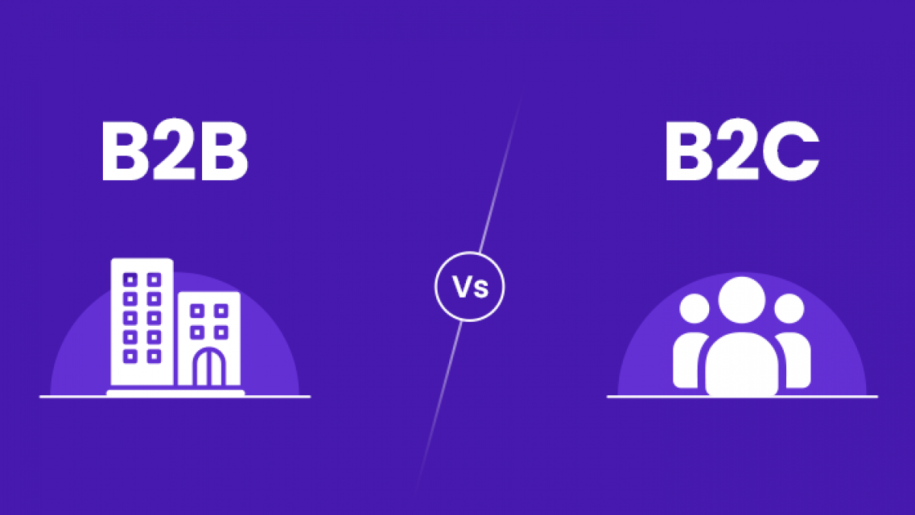Many SDRs who switch to B2B sales after working in B2C face challenges exclusive to the B2B sector. These two sectors function very differently and often include contrasting tactics. That’s why it’s important to map the fundamental differences between these two sectors so that SDRs can prepare themselves to be a great fit in B2B sales.
B2B and B2C sales in a nutshell
In the most elementary terms, B2B sales occur when a business sells a product or service to another business. No direct selling to consumers happens here. However, in B2C sales, a business sells directly to consumers, so establishing branding and an emotional connection with customers becomes essential. There are several points where B2B and B2C overlap in terms of ideologies and other times when the approaches followed in both sectors are poles apart. Let’s explore some of these critical features of B2B and B2C sales and understand the differences.
B2B Vs. B2C sales
Following are the differences between these two sectors:
Basic strategy
The B2B area has a ‘snipe and kill’ approach which means that the quality of prospects matters more than the quantity. The customer approach strategy is pretty nuanced here because targeted moves are made. Before pitching, attention is paid to customer preferences, history, and other relevant parameters.
On the contrary, the B2C sector has more of a ‘spray and pray’ approach due to its sheer number of prospects. The conversion rate is much lower here, with more emphasis on the quantitative aspect. The strategy is very general and rarely personalised. The only factor determining conversion rate is the number of people receiving pitches or demos.
Market and deal sizes
The B2B sector has large enough markets; however, the size is in no way comparable to B2C markets. The average deal size in this sector is high, though. In B2C, the average deal value is much lower than in B2B, and the market size is significantly larger than in B2B because it includes all of India’s significant sectors, like EdTech and Data Science.

Decision-making tiers
Usually, one or two members are involved in taking a call about a major decision like rebranding or acquisition in B2C. However, B2B is complex because it needs multiple-layered approvals. When there are a lot of stakeholders, making any major shift becomes tricky because convincing every decision-maker is no easy task. In some cases, there’s also legal involvement, making things even more matted.
Also Read: 5 Actionable Tips For Building An Optimised LinkedIn Profile
Velocity and value sales
In B2C, velocity sales are followed, meaning the goal is to reach out to as many people as possible. Getting stuck with one prospect is not common in B2C. Going through as many prospects and capturing as much of the market as possible becomes the driving factor here. Consistently focusing on the velocity aspect is unique to the B2C domain. Hence, focusing on a standard pitch works fine because the magic lies in increasing the reach and keeping it up daily.
However, in the B2B space, things happen differently. The focus is dead set on value delivery. The product or service sold should satisfy at least one of the two purposes- increasing revenue or lowering business costs. Things can get challenging here because ‘value’ carries different meanings for different people, even for a similar context. So, understanding the customer and delivering according to that will work every time. An SDR’s skills and wit takes center stage in B2B sales. So, SDRs have to work on their pitches and demos more meticulously. Every move should explain how we add value to the prospect’s business.
Parallels between B2B & B2C sales
While there are several points of difference between these two, there are certain areas where the approach followed by SDRs in both sectors goes hand in hand. Here’s a list we created:
- Greeting failures– In sales, the typical response rates are often close to 1%. So, SDRs need to learn from their failures but, at the same time, not let these hold them back.
- Being proactive– In sales, the right thing at the right time can give the right rewards. So, being proactive and utilising one’s presence of mind becomes an irreplaceable factor.
- Improving visibility on LinkedIn: This is categorically directed towards the B2B sector. LinkedIn functions as the currency of the B2B sector. So, being creative and learning constantly helps improve your visibility on LinkedIn and build better networks for opportunities to flow in.
- Discipline– It can never be stressed enough that discipline is the number one ingredient needed to create a successful sales career. Sometimes, the only way to meet the targets is to keep at it. There are no shortcuts; the sooner an SDR understands this, the smoother their sales career will be.
Final Words
We hope you’ve got a good grasp on the areas where B2C and B2B sales approach overlap and where they don’t. It’s crucial to know that most B2C products are self-served, and sales mostly happen via an app or website. But, in B2B, that’s not the case; hence the product should be straightforward in creating value and solving a current prospect problem. However, a higher quality product with better personalisation comes with a higher ticket size. As the ticket size increase, so do the complexities. Hence, the takeaway is that B2B and B2C have to deal with their own challenges and find creative ways to navigate them.
Follow Zohort to start your career in the B2B industry.


